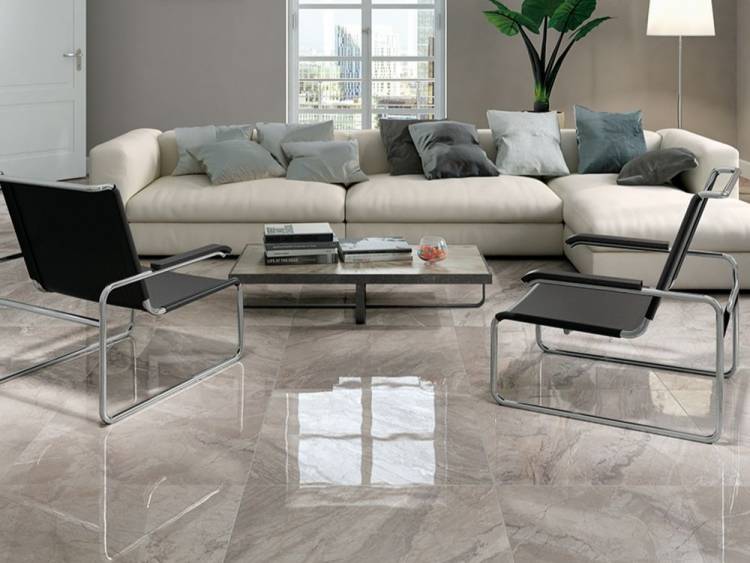
Everything You Need to Know About Installing Marble Flooring
Marble is a natural stone that is formed when limestone is subjected to high temperatures and pressures. Marble is available in a variety of colors, including white, black, pink, and green. It’s a durable material that can last for decades with proper care.
Marble flooring is a popular choice for many homeowners because it’s elegant and classic. Marble is also unique, each piece of stone has its own veining and patterns. And, marble adds value to your home. If you’re considering marble flooring for your home, here’s what you need to know about the installation process.
Installing marble flooring is a multi-step process that includes:
1. Preparing the subfloor: The first step is to prepare the subfloor. The subfloor must be flat, level, and free of any debris or imperfections. If necessary, the subfloor can be repaired or replaced.
2. Measuring and cutting the marble: The next step is to measure and cut the marble tiles. This is a critical step in the installation process, as the tiles must be cut accurately to fit the space.
3. Laying the tiles: Once the tiles are cut, they can be laid into place. This is best done by starting in the center of the room and working outwards. Be sure to use mortar or adhesive to secure the tiles in place.
4. Grouting the tiles: After the tiles are laid, they need to be grouted. Grouting helps to fill any gaps between the tiles and gives the floor a finished look.
5. Sealing the floor: The final step in the installation process is to seal the floor. Sealing helps to protect the stone from stains and makes it easier to clean.
Installing marble flooring can be a challenging process, but it’s worth it for the luxurious look it adds to your home. With proper care, your marble floors can last for decades.
Marble flooring is a beautiful and luxurious addition to any home. But before you install marble flooring, there are a few things you need to know. Here's everything you need to know about installing marble flooring:
Marble is a natural stone that is quarried from the earth. It's then cut into thin slices and polished to create a smooth surface. Marble is available in a variety of colors and patterns, and it can be used for both indoor and outdoor applications.
When it comes to durability, marble is one of the most durable flooring options available. It's resistant to scratches, stains, and moisture. Marble is also easy to maintain - simply sweep or vacuum regularly and mop with a mild cleanser when needed.
If you're considering marble flooring for your home, here are a few things to keep in mind:
- Choose the right type of marble. There are two types of marble - Carrara and Calacatta. Carrara marble is more affordable and typically has a lighter color. Calacatta marble is more expensive and has a richer, more distinct color.
- Decide on the finish. Marble flooring is available in several finishes, including polished, honed, and tumbled. Polished marble has a high sheen and is the most popular choice for floors. Honed marble has a matte finish and is best for areas that don't see a lot of foot traffic. Tumbled marble has a distressed look and works well in rustic or country-style homes.
- Choose the right size tiles. Marble flooring is typically installed in large tiles. Smaller tiles can be used, but they may require more frequent grout cleaning.
- Work with a professional. Marble flooring is best installed by a professional contractor. If you're considering a do-it-yourself project, be sure to do your research and have all the necessary tools and supplies on hand before starting.
Marble flooring is a classic choice for any home. It's luxurious, elegant, and easy to maintain. But before you install marble flooring, there are a few things you need to know.
marble flooring is a hefty investment. It's not cheap, and it's not something you can easily DIY. If you're not experienced in installation, it's best to leave it to the professionals.
Another thing to keep in mind is that marble is a natural stone. That means each piece is unique, and there will be variations in color and veining from one piece to the next. It's important to select your marble from the same batch so that the colors match up as closely as possible.
When it comes to maintenance, marble is pretty easy to care for. Just regular sweeping and mopping will keep it looking clean. But it is susceptible to staining, so be careful with spills and prompt cleaning is key. Acidic substances like citrus juices or vinegar can etch the surface of the marble, so avoid using them on your floors.
If you're considering marble flooring for your home, keep these things in mind. It's a beautiful investment that will last for years, but it's not without its challenges. With a little bit of care, your marble floors will stay looking gorgeous for years to come.
Materials for Installing Marble Flooring
Installing marble flooring in your home can be a big project, but it’s one that can really make a difference in the look and feel of your space. Here’s everything you need to know about installing marble flooring, from product lists to tips on installation.
If you’re thinking about adding marble flooring to your home, you’re not alone. Marble flooring is a popular choice for many homeowners because it’s classic and elegant. Marble is also a durable material that can last for many years, making it a good investment for your home.
Before you start shopping for marble flooring, it’s important to understand the different types of marble and how they differ in price and quality. Carrara marble is one of the most popular types of marble and it’s also one of the most affordable. Other popular types of marble include Calacatta and Nero Marquina.
When you’re ready to start shopping for marble flooring, it’s important to find a reputable dealer who can help you find the best quality product for your budget. You should also compare prices from different dealers before making a purchase.
Once you’ve found the perfect marble flooring for your home, the next step is installation. If you’re planning to install the flooring yourself, it’s important to follow all the instructions carefully and prep the area well before starting. If you hire a professional to install your marble flooring, make sure they are experienced and have good reviews.
Installing marble flooring can be a big project, but it’s one that can really make a difference in your home. With a little careful planning and research, you can find the perfect product and install it in your home with ease.
Cost of Installing Marble Flooring
Installing marble flooring is a big project, but it's one that can really transform your home. If you're thinking about install marble flooring, here's everything you need to know.
First, let's talk about the different types of marble flooring. The most popular type of marble flooring is polished marble, which has a shiny and reflective surface. Polished marble is perfect for high-traffic areas like entryways and kitchens because it's easy to clean and maintain.
Honed marble is another popular type of marble flooring. Honed marble has a matte finish, which gives it a more natural look. Honed marble is best for low-traffic areas like bedrooms and bathrooms because it's not as easy to clean as polished marble.
Now that you know the different types of marble flooring, let's talk about installation. Installation is one of the most important aspects of marble flooring because it determines how your floor will look and perform.
There are two main methods for installing marble flooring: floating and direct glue-down. Floating is the easiest method for do-it-yourselfers because it doesn't require any adhesive. Direct glue-down is more permanent, but it requires more experience and expertise.
Once you've decided on the installation method, it's time to choose the perfect tile. There are many factors to consider when choosing marble tile, including size, shape, color, and pattern.
Size is one of the most important factors to consider because it determines how much space the tile will take up. Marble tiles come in a variety of sizes, from small mosaic tiles to large slabs.
Shape is also an important factor to consider when choosing marble tile. The most popular shapes are square and rectangular, but there are also hexagonal, octagonal, and other shapes available.
Color is another important factor to consider when choosing marble tile. The most popular colors are white, black, and gray, but there are also many other colors available.
Pattern is the last factor to consider when choosing marble tile. The most popular patterns are veins, swirls, and solids. There are also many other patterns available.
Now that you know everything you need to know about installing marble flooring, it's time to get started on your project!
Unique Properties of Marble Flooring
Installing marble flooring in your home is a big decision. There are a lot of factors to consider, such as cost, durability, and maintenance. But if you do your research and find the right type of marble for your needs, you can enjoy beautiful, long-lasting floors for many years to come.
Here are a few things to keep in mind when installing marble flooring:
Cost: Marble is a luxury material, so it will likely be more expensive than other types of flooring. However, it is important to compare prices from different suppliers before making a final decision.
Durability: Marble is a very strong and durable material, but it can be scratched or stained if it is not properly sealed. Be sure to ask your supplier about the best way to protect your floors.
Maintenance: Marble floors require regular cleaning and polishing to maintain their beauty. You will also need to be careful not to damage them with harsh chemicals or abrasive cleaners.
Choosing the Right Type of Marble Flooring
When it comes to choosing flooring for your home, there are many things to consider. But if you're looking for a classic and luxurious look, marble flooring is a great option. Here's everything you need to know about installing marble flooring in your home.
Marble is a natural stone that has been used for centuries in everything from architecture to sculptures. It's unique veining and color variations make it a popular choice for flooring, countertops, and more.
Marble is a porous material, so it needs to be sealed before use. This will help protect it from stains and wear. Once sealed, marble is easy to maintain and can last a lifetime with proper care.
When installing marble flooring, it's important to choose a professional installer who has experience working with the material. They will be able to properly seal and install your flooring so that it looks its best.
Preparing Your Subfloor for Installing Marble Flooring
If you're thinking about installing marble flooring in your home, there are a few things you need to do to prepare your subfloor first. Here's what you need to know.
The first thing you need to do is make sure your subfloor is level. Uneven surfaces can cause your marble flooring to crack or chip over time. If your subfloor is uneven, you'll need to level it out before you can install the marble flooring.
Next, you need to make sure your subfloor is clean and free of debris. Any dirt or dust on the surface can create a imperfections in your marble flooring. Be sure to sweep and vacuum the subfloor thoroughly before you begin installation.
Finally, you need to determine what type of adhesive you'll need to use to install the marble flooring. There are a variety of adhesives on the market, so be sure to read the manufacturer's instructions carefully to ensure you're using the right type of adhesive for your project.
With these three things in mind, you're ready to start preparing your subfloor for installing marble flooring. Just be sure to take your time and follow these steps carefully and you'll be sure to have a beautiful, long-lasting marble floor that you'll enjoy for years to come.
Installing Marble Flooring – Step by Step Guide
When it comes to installing marble flooring, there are a few things you need to know in order to get the best results. Here’s everything you need to know about installing marble flooring, from choosing the right type of marble to ensuring a proper installation.
Marble is a classic flooring choice that adds beauty and elegance to any home. But before you install marble flooring, it’s important to choose the right type of marble for your project. There are many different types of marble, each with its own unique color and veining.
The most common type of marble is Carrara marble, which is a white or blue-gray marble with light veining. Other popular types of marble include Calacatta marble, which is a white marble with thick, bold veining; and Nero Marquina marble, which is a black marble with white veining.
Once you’ve selected the right type of marble for your project, it’s time to start the installation process. Installing marble flooring is a multi-step process that includes measuring the space, laying down a subfloor, installing the marble tiles, and grouting the joints.
If you’re installing marble flooring yourself, be sure to follow all manufacturer instructions and take care when handle the delicate tiles. For best results, hire a professional installer who has experience working with marble.
With proper care and maintenance, your marble floors will last for many years to come. Be sure to sweep or vacuum regularly to remove dirt and dust, and mop with a gentle cleanser when needed. Avoid using harsh cleaners or abrasive pads, as these can damage the finish of your floors.
Caring for and Maintaining Marble Flooring
If you're considering marble flooring for your home, you've come to the right place. In this article, we'll cover everything you need to know about installing marble flooring, from what materials you'll need to what tools you'll need and how to install it.
Marble flooring is a popular choice for many homeowners because of its beauty and durability. Marble is a natural stone that comes in a variety of colors and patterns, making it a versatile choice for any room in your home. Marble floors are also easy to care for and maintain, and they can last for many years with proper care.
Installing marble flooring is not a difficult task, but it does require some planning and preparation. First, you'll need to choose the right type of marble for your project. There are many different types of marble available, and each one has its own strengths and weaknesses. You'll also need to choose the right size and shape of marble tile for your space.
Next, you'll need to gather the necessary tools and materials for your project. You'll need a wet saw or tile cutter, a level, a tape measure, spacers, adhesive, grout, and sealer. Make sure you have all of these items before you begin your project.
Once you have all of your materials, you're ready to begin installing your new marble flooring. The first step is to lay out the tiles in your space so that you can get an idea of how they will fit together. Then, you'll need to spreading the adhesive on the floor and laying down the tiles. Be sure to use spacers between each tile so that the grout will have something to gripping onto later.
After the adhesive has had time to set, you can begin grouting the tiles. Spread the grout over the tiles with a rubber float or other tool, then wipe away any excess grout with a damp sponge. Once the grout is dry, you can apply a sealer to protect it from stains and dirt.
That's it! You've now installed beautiful new marble flooring in your home. With proper care, your new floors will last for many years to come.
Pros and Cons of Installing Marble Flooring
Marble flooring is a classic and luxurious choice for any home. It's elegant, durable, and easy to care for, making it a popular choice for both indoor and outdoor applications. While marble is a natural stone, it can be manufactured in a variety of colors and finishes, giving you plenty of options to choose from when designing your space.
Whether you're considering marble for your kitchen, bathroom, or another area of your home, there are a few things you should keep in mind during the planning and installation process. In this blog post, we'll walk you through everything you need to know about installing marble flooring, from choosing the right product to caring for your new investment.
When shopping for marble flooring, you'll first need to decide on the type of marble you want. There are three main types of marble:
-Carrara: This type of marble is white or blue-gray in color with small veins running throughout. It's named after the Carrara region of Italy, where it has been mined for centuries.
-Calacatta: This type of marble is similar to Carrara but is typically brighter white with thicker veins. It originates from the Apuan Alps in Italy's Tuscany region.
-Statuary: Statuary marble is a pure white marble with very few veins. It's quarried in limited quantities and is typically more expensive than other types of marble.
Once you've selected the type of marble you want, you'll need to choose a finish. Marble flooring is available in polished, honed, and tumbled finishes.
-Polished: A polished finish will give your floors a high-shine look that reflects light and amplifies the beauty of the stone.
-Honed: A honed finish is matte and non-reflective, giving your floors a more natural look. Honed marble is also more porous than polished marble, making it more susceptible to staining.
-Tumbled: A tumbled finish is achieved by tumbling pieces of marble in a machine with small stones and water. This process gives the stone a distressed look with soft edges.
Once you've selected your product, it's time to install! Marble flooring can be installed in a variety of ways, including glue-down, floating, and nailedown methods. We recommend working with a professional installer to ensure your new floors are installed correctly.
After your floors are installed, it's important to take steps to protect them and keep them looking their best. Marble is a porous material that can stain easily, so we recommend sealing your floors periodically. You should also avoid using harsh cleaning products or scrubbing your floors vigorously, as this can damage the surface. Instead, sweep or vacuum regularly and clean with a mild detergent when necessary.
By following these tips, you can enjoy your new marble floors for years to come!
Troubleshooting Common Problems with Marble Flooring
There are few materials as luxurious and gorgeous as marble. For centuries, marble has been used in some of the most iconic buildings and structures in the world, from the Taj Mahal to the Parthenon. And of course, it’s a popular material for home décor as well, particularly in the form of marble flooring. If you’re considering installing marble flooring in your home, there are a few things you should know. In this blog post, we’ll go over everything you need to know about installing marble flooring, from deciding if it’s the right material for you to choosing the right type of marble for your needs.
Marble is a metamorphic rock that’s composed of limestone that’s been exposed to high temperatures and pressure over time. This gives marble its signature veining, which can range from subtle to dramatic depending on the type of marble you choose. Marble is also a very durable material that can last for centuries with proper care.
However, marble is also a relatively soft stone, which means it can be scratched or etched by acidic substances. That means that marble flooring may not be the best choice for homes with pets or small children. Marble is also a porous material, which means it can stain if not sealed properly.
If you decide that marble flooring is right for your home, the next step is to choose the right type of marble. There are dozens of different types of marble, each with its own unique veining and coloration. Some popular choices for marble flooring include Carrara marble, Calacatta marble, and Nero Marquina marble.
Carrara marble is a classic choice that features subtle gray veining on a white background. Calacatta marble is similar to Carrara marble but has thicker and more dramatic veining. Nero Marquina is a black marble with white veining, and it makes a striking statement in any room.
Once you’ve chosen the right type of marble, it’s time to start thinking about installation. Marble flooring can be installed in a few different ways, including using tiles or slabs. Tiles are the most popular option because they’re easier to install and maintain, but slabs can give your home a more luxurious look.
If you opt for tiles, they can be installed using either the dry-lay method or the wet-lay method. The dry-lay method involves laying out the tiles before applying any adhesive, while the wet-lay method involves spreading adhesive on the back of each tile before installation.
Slab installation is a bit more involved and should be done by a professional. First, the subfloor will need to be prepared, which may involve leveling or installing plywood over an existing floor. Then, the slabs will be laid out and cut to size before being glued down and grouted.
Installing marble flooring can be a big project, but it’s definitely worth it when you see the final results. A beautiful marble floor can add instant elegance and value to your home.
Frequently Asked Questions About Installing Marble Flooring
Marble flooring is a luxurious and classic choice for any home. It’s elegant, timeless, and easy to care for. But before you install marble flooring in your home, there are a few things you should know. Here are some frequently asked questions about installing marble flooring:
Can I install marble flooring myself?
Installing marble flooring is not a DIY project. It’s best to leave it to the professionals.
How much does marble flooring cost?
The cost of marble flooring varies depending on the type of marble, the size of your project, and the complexity of the installation. Generally, you can expect to pay between $10 and $30 per square foot for marble flooring.
How long does it take to install marble flooring?
It typically takes between two and four days to install marble flooring.
How do I care for my marble floor?
You should sweep or vacuum your marble floor regularly to remove dirt and dust. You can damp mop your floor with a mild soap and water solution. Be sure to avoid harsh chemicals and abrasive cleaners, as they can damage the surface of your floor.
If you have any more questions about installing marble flooring in your home, be sure to talk to a professional. They can help you choose the right type of marble for your project and answer any other questions you may have.













